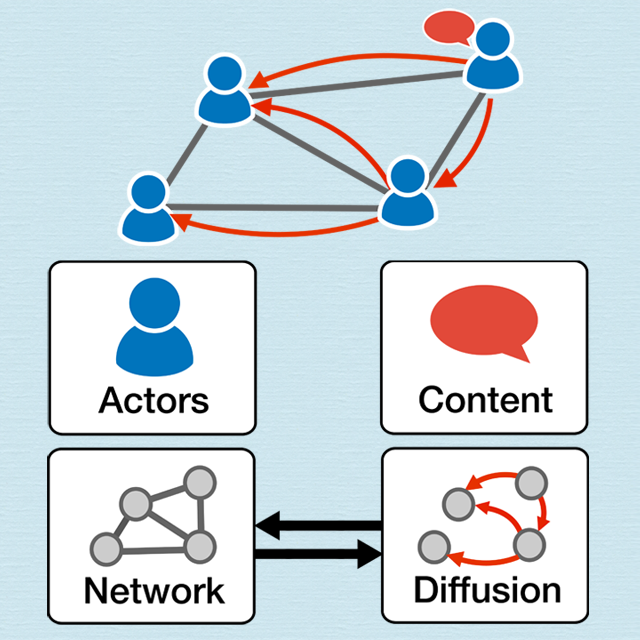
Thanks to the advent of the Internet, we can track, model, and predict communication and information propagation. This project aims to provide insights into information diffusion on online social networks from three aspects:
- People who share information;
- Features of spreading content;
- The interplays between network structure and diffusion process.
The first part of the project delves into the consequences of limited human attention. Using a model that simulates meme diffusion while each agent is equipped with a finite attention span, we demonstrate that limited attention can intensify the competition, leading to heterogeneous dynamics of meme popularity. Besides, we find that people allocate their attention differently among strong and weak ties, driven by two competing tendencies for information gathering and social force.
The second part investigates properties of transmissible content, particularly into the topic space. We propose a measure of topical diversity and scrutinize its role in content and user popularity. High topical diversity of early adopters or early co-occurring tags is shown to imply high future virality of content, but low topical diversity helps an individual accumulate social impact. We also study how people communicate with strong and weak ties differently in terms of conversation topics.
Finally we present studies of how network structure, particularly community structure, influences the propagation of Internet memes and how the information flow in turn affects social link formation. We find that network communities trap information flows in general, but not viral memes. By characterizing the early spreading patterns of memes in terms of community concentration, we show that future meme virality can be predicted. We then examine traffic-driven shortcuts in social link formation and compare it with other strategies using Maximum-Likelihood Estimation. Triadic closure has a strong effect, but traffic-based shortcuts are another indispensable factor in interpreting network evolution. Meanwhile, individual strategies for creating new social links are highly heterogeneous.
We believe that the presented work can contribute to a better and more comprehensive understanding of information diffusion among online social-technical systems and yield advantages to viral marketing, advertisement, and social media analytics. Many complex dynamics of human society could be better unraveled by continued investigation of network structure.
People
Papers
See more in Truthy Publications
Data
See more in NaN Group Data Repository
Support
This project was supported in part by NSF grants IIS-0811994 and CCF-1101743, the project “Information Dynamics in Complex Data Structures” (PRIN), the Lilly Endowment (Data to Insight Center grant), Facebook, the James S. McDonnell Foundation, DARPA Grant W911NF-12-1-0037, and the School of Informatics and Computing at Indiana University, Bloomington.



